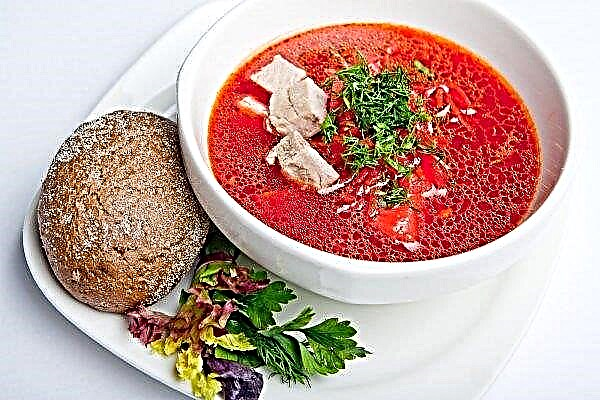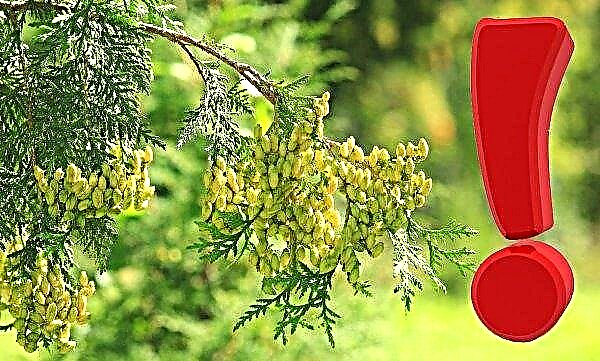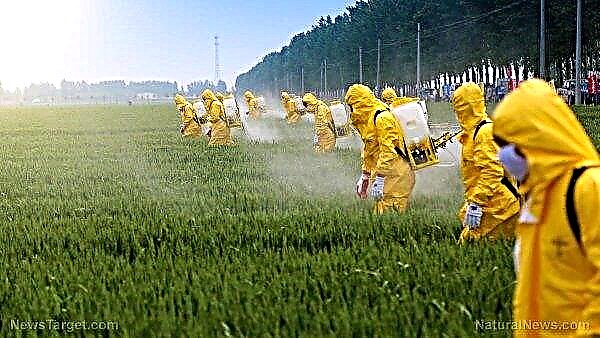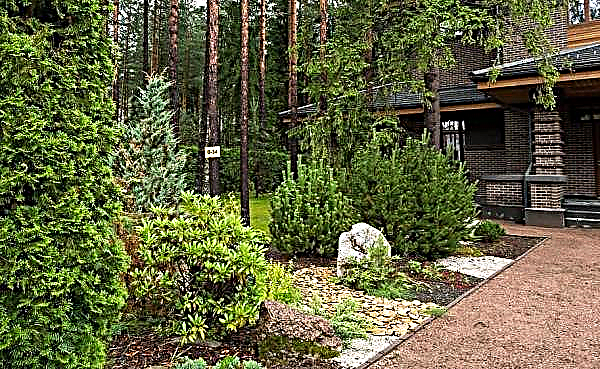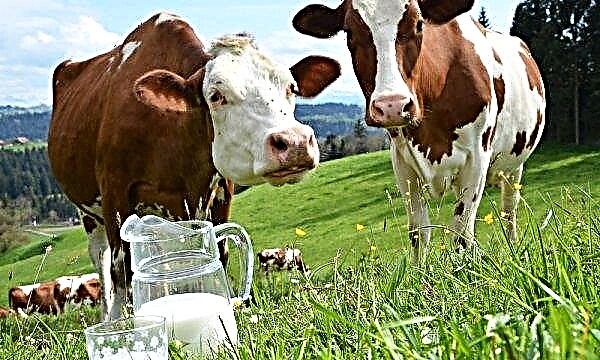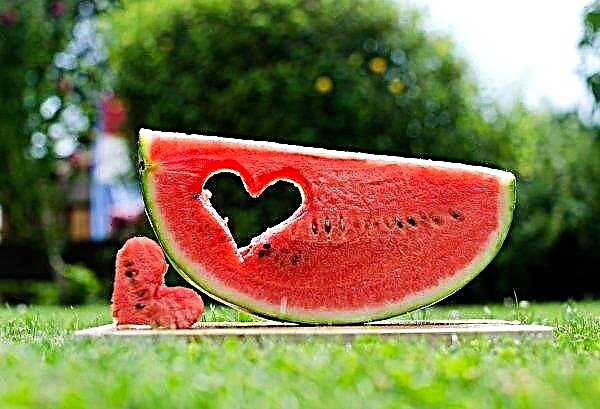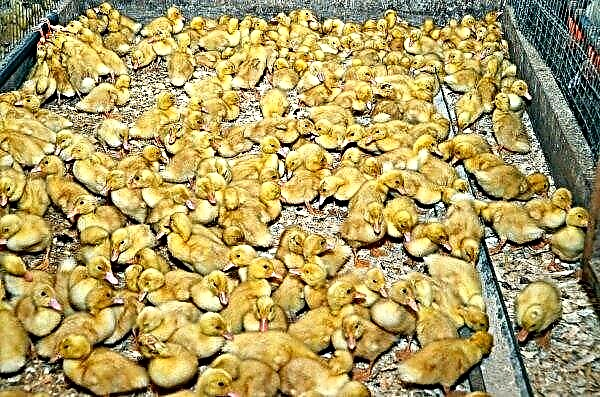The name Brigantine, somewhat strange for land raspberries, is combined with another phenomenon characteristic of this raspberry variety. For a third of a century of its existence, it has not been lost among many dozens of new varieties of raspberries and, having adequately withstood the competition from many new-fangled designs by breeders, it still holds a solid position in many raspberries. Read more about the raspberry variety Brigantine read further in the article.
Variety History
Having crossed raspberry varieties Sayany and Ottawa, breeder I. Kazakov from a strong point of the Union Gardening Institute located in the Bryansk region, in the late 70s of the last century, bred a new variety of late-ripening raspberries, which was romantically called Brigantine.
Did you know? Appetizing-looking raspberry, in fact, from the point of view of science, it’s not a berry at all, but a multi-seedling, that is, a conglomerate of many small fruits, each of which has a personal bone.
The breeder himself, who had a world-class scientific reputation and was the author of many famous raspberry varieties, considered Brigantine one of his most successful achievements. And he was not mistaken: for a third of a century, the variety allowed for cultivation in the Central Black Earth and East Siberian regions has spread beyond them, still occupying a worthy place in many raspberries.
Description, characteristics, features
 Bushes of this raspberry variety, reaching a height of 1.8 m, are not sprawling, which makes it possible to plant more bushes on a certain area. Each of them forms up to a dozen shoots of substitution. The stems are covered with red spikes of small size, evenly distributed along the entire length of the shoot.
Bushes of this raspberry variety, reaching a height of 1.8 m, are not sprawling, which makes it possible to plant more bushes on a certain area. Each of them forms up to a dozen shoots of substitution. The stems are covered with red spikes of small size, evenly distributed along the entire length of the shoot.
Bushes at any age require garters to trellises to avoid declining to the ground due to the severity of the crop or weather disasters. The leaves on the stems have a dark green color, a corrugated surface and noticeable pubescence on the back of the leaf surface.
On fruit branches, up to 16 ovaries can form. The fruits of this self-pollinated raspberry have a conical shape, dark ruby color, sweet and sour taste, estimated by tasters at 3.9 points out of 5 possible, and an average weight of 3.2 g. They begin to ripen massively in late July and continue this process until mid august.
Advantages and disadvantages
- The advantages of raspberry brigantine include:
- the opportunity to get decent productivity;
- friendly ripening of fruits;
- unpretentiousness, ability to adapt to difficult climatic conditions;
- resistance to drought;
- universality of the use of fruits.
- The disadvantages are:
- insufficient sweetness of fruits, which in combination with sourness is not everyone likes;
- extension of the ripening period in rainy summers;
- insufficient intensity of the characteristic raspberry aroma;
- low productivity for growing on an industrial scale.

Frost resistance, drought resistance
The erect shoots of this raspberry variety are able to withstand frosts down to -30 ° C without cracking and without requiring shelter for the winter. In addition, the variety is resistant to drought and fungal diseases.
Fruiting and Yield
As already mentioned, the fruits of Brigantine raspberries ripen from late July to mid-August. In rainy weather, the ripening process runs amicably, which facilitates the collection of berries. They are easily separated from the stalk, but do not crumble on their own when ripe. The average yield from the bush is 2.2 kg.
Did you know? The cloudless existence of man is called not life, but raspberries, the magic sound of church bells is called raspberry. But the famous thieves' raspberry has nothing to do with this noble plant. It’s just a distorted word “Melina”, which in Hebrew means shelter, crypt.
Landing rules
Planting seedlings in the ground is not very difficult, although it requires care, for example, when choosing a place to plant.
The timing
Most often, this raspberry is planted in the spring before the sap flow in the plant begins. The exact dates vary greatly depending on the climatic conditions of a given area. In the southern regions with a long and warm autumn, they practice autumn planting. In this case, planting is carried out after the leaves fall from the bush.

Choosing the right place
The best place to grow raspberry bushes are areas well shined by the sun and protected from winds. Light and medium loams are considered optimal soil for raspberries, and acidified soils are subject to liming.
It is best to arrange the rows of raspberry bushes in the east-west direction, which ensures optimal illumination of foliage and stems throughout the day and contributes to the formation of the crop at a height of 0.6 m from the soil surface and above.
Important! Ground water under the raspberry should not be closer than 1.5 m from the surface of the earth.
- The most favorable places for growing this culture are those where they used to grow:
- beans;
- peas;
- Beans
- bow;
- garlic;
- dill;
- parsley;
- calendula;
- marigold.
- It is not recommended to plant raspberries after:
- Tomatoes
- potatoes;
- eggplant;
- pepper;
- raspberries earlier than 5 years.
Selection and preparation of planting material
On seedlings should check the condition of the root system and stems. It is necessary to remove all foliage from them and leave the shoot length no more than 0.7 m. If seedlings are not shortened, they will take root much worse.

Landing algorithm
A plot intended for spring planting of raspberry seedlings is dug up ahead of time in the fall with simultaneous application to each square. m:
- rotted mullein or compost - 2 buckets;
- wood ash - 0.5 buckets;
- double superphosphate - 3 matchboxes;
- potassium sulfate - 4 matchboxes.
Most often, the tape method is used when landing.
For this:
- They dig a trench up to 0.4 m deep and 0.5 m wide.
- Seedlings are placed in it at a distance of 0.4 m from each other. The distance between the rows should reach 2 m.
- The bushes are covered with soil and watered at the rate of half a bucket for each seedling.
- Then wet soil is recommended to be mulled by sawdust, hay, straw or chopped peat.
- After 3 days, watering must be repeated.

Care
If summer is rainy, Brigantine raspberries have enough natural moisture in the soil. In drought, although this variety is resistant to it, during flowering, ripening of berries and before preparing for wintering, the roots of the bushes need to be supplied with moisture to a depth of 0.4 m. The rest of the time during the hot season, it is enough to water the raspberries weekly.
Important! In no case should waterlogging and stagnation of water in the root system be allowed, which can lead to the death of the plant.
In spring, when plants are actively gaining green mass, they especially need nitrogen, which is best delivered to the soil with the help of organic fertilizers in the form of rotted manure, compost and bird droppings.
During flowering, the formation of ovaries and the growth of fruits, bushes already require potassium, phosphorus and calcium, which are contained in complex mineral fertilizers, to a greater extent. Potassium is also necessary for the plant for better wintering, so it is useful to apply it to the soil in the fall.

Important for the development of plants and their productivity is the correct pruning. Immediately after the snow melts to the ground level, all dry, damaged or less than 1 cm in diameter weak branches are shortened. Full shoots are shortened by 0.2 m down to the upper living kidney.
Before the buds are formed, pinch all the green shoots of the main shoot, which contributes to the formation of additional peduncles that increase productivity. Immediately after harvesting, the shoots on which there were berries are removed completely, which stimulates the yield of the next season. Before winter, all inferior branches are eliminated. In this case, leave up to 15 ripened shoots per 1 running meter.
Harvesting and storage
Delicate raspberry fruits are preferably harvested in the morning or evening in dry weather. The presence of dew or raindrops on the berries, which significantly reduces the shelf life, is not allowed. Gather raspberry berries in small containers with good ventilation. Unwanted raspberries collected then pour into other containers.
Usually the fruits are separated from the stalk. In the Brigantine variety, this process is easy. However, if you collect the berries together with the grower, this, complicating the process of collecting berries, at the same time significantly increases their keeping quality. In the refrigerator at a temperature of 0 to + 2 ° C, raspberries can be stored for up to 5 days. The fruits of the Brigantine variety also tolerate freezing well.
Winter preparations
If promptly removed from the raspberry bushes are thawed, as well as dried up, diseased and too thin branches, then the frost-resistant raspberry variety Brigantine does not need shelter and can even transfer -30 ° C to snowless winter. If lower temperatures are expected in the absence of snow, then it is advisable to mulch the soil around the bushes with dry humus, sawdust, straw or chopped peat for the winter.

Breeding methods
Since the raspberry variety Brigantine forms a sufficient number of substitution shoots, it is quite capable of providing the gardener with planting material for propagating the crop. For this, annual young shoots are used, whose thickness has already reached the diameter of the pencil. In addition, freshly dug seedlings must have a well-developed root system.
Raspberries are also propagated by root cuttings with several buds, which are separated from the undermined mother plant.  Root offspring are placed in a sand-peat mixture for rooting and germination. A year later, they are planted in a permanent place.
Root offspring are placed in a sand-peat mixture for rooting and germination. A year later, they are planted in a permanent place.
Diseases and Pests
As already noted, a feature of the raspberry variety Brigantine is resistance to fungal diseases, which most often affect raspberries. But at the same time, plants can be affected by bacterial and viral diseases, as well as pests. These diseases are dangerous for their incurability, therefore diseased plants are subject to immediate destruction.
Most often, raspberries get sick:
- Stem and root cancer, which is manifested by tumors on the roots and stems. In the latter case, they tear the surface of the cortex. Ill plants lose strength, frost resistance and eventually die.
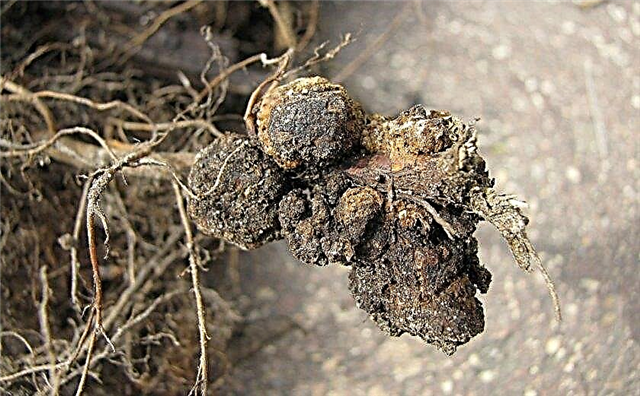
- Raspberry Curly, causing the foliage to become stiff, curl into a straw, turn brown and dry. The fruits undergo deformation and become acidic. After a couple of years, the diseased bush dies.

- Striped (streak)characterized by the formation of neurotic stripes on the annual shoots. As the disease develops, diseased shoots of internodes become short, and foliage spirals. After 2 years, the disease leads to the death of the raspberry bush.
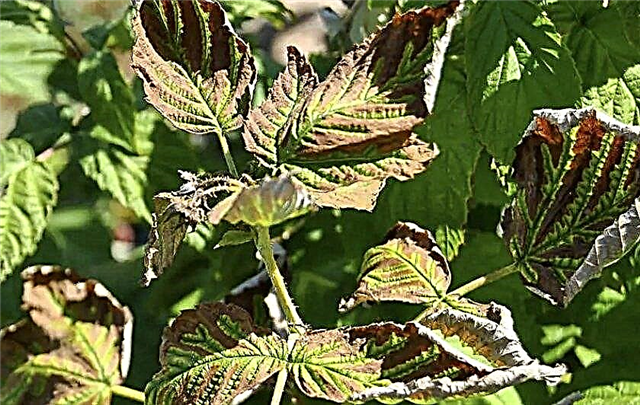
- Viral mosaic, leading to crushing and covering with yellow dots of foliage, as well as to inhibition of the growth of stems. Berries become hard and unfit for food.

Raspberry bushes can also be attacked by such pests:
- Spider miteseating leaf juice. They struggle with ticks with the help of Actellik, Fufanon, Karbofos, Iskra-M, or Tiovita Jet.

- Raspberry glasswhose caterpillars eat the core of the stems and roots, which leads to wilting of the bush. The affected stems have to be cut at the root, and the rest should be processed using Iskra-M, Confidor or Decis.
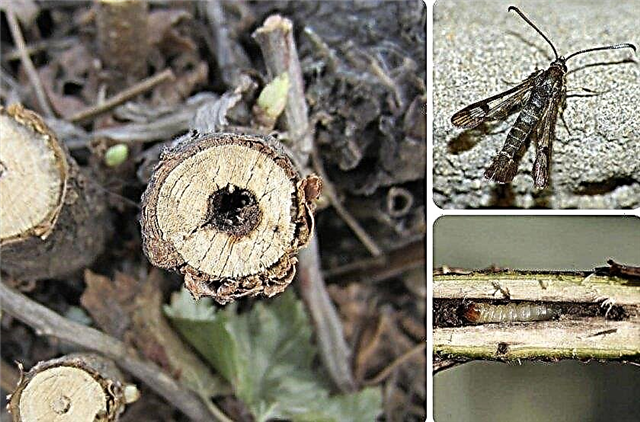
- Raspberry beetlesthat damage flowers and leaves, and their larvae are fruits. They fight bugs during budding by treating Fufanon, Alatar, Actellik, Inta-Vir or similar insecticides.

- Raspberry strawberry weevilswhose larvae eat up the buds from the inside. These pests are destroyed using the above insecticides.
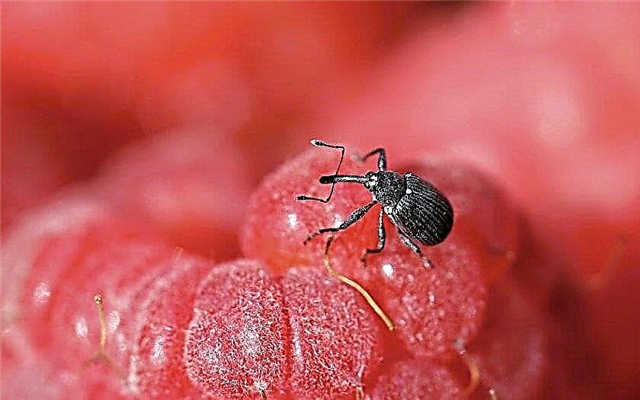
- Shoot raspberry aphid, which, according to the description, creates entire colonies on the underside of leaf surfaces, on shoots and inflorescences, causing coagulation, deformation and wilting. They fight aphids with the same insecticides.
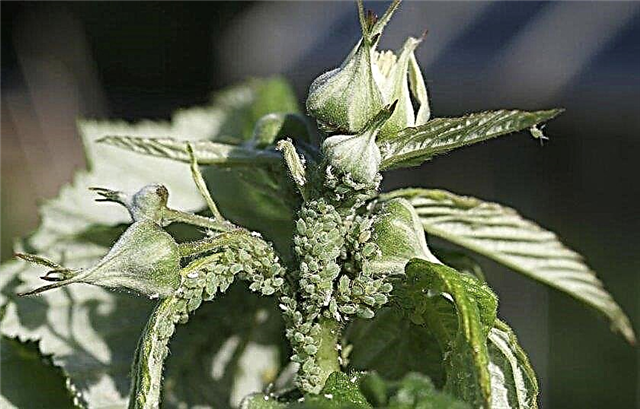
- Raspberry stem gall midgesforming bloats on the shoots, which lead to the drying of the stems. Affected stems are cut 4 cm below the gall. And the rest of the bush is sprayed with the insecticides listed above.

Over a third of a century of its existence, the Brigantine raspberry variety has replaced more than one generation of its admirers and still finds them, despite the enormous competition from many new large-fruited varieties. This is facilitated by the high adaptive abilities of the Brigantine, its unpretentiousness and undemanding care and a fairly high yield in adverse growing conditions.











